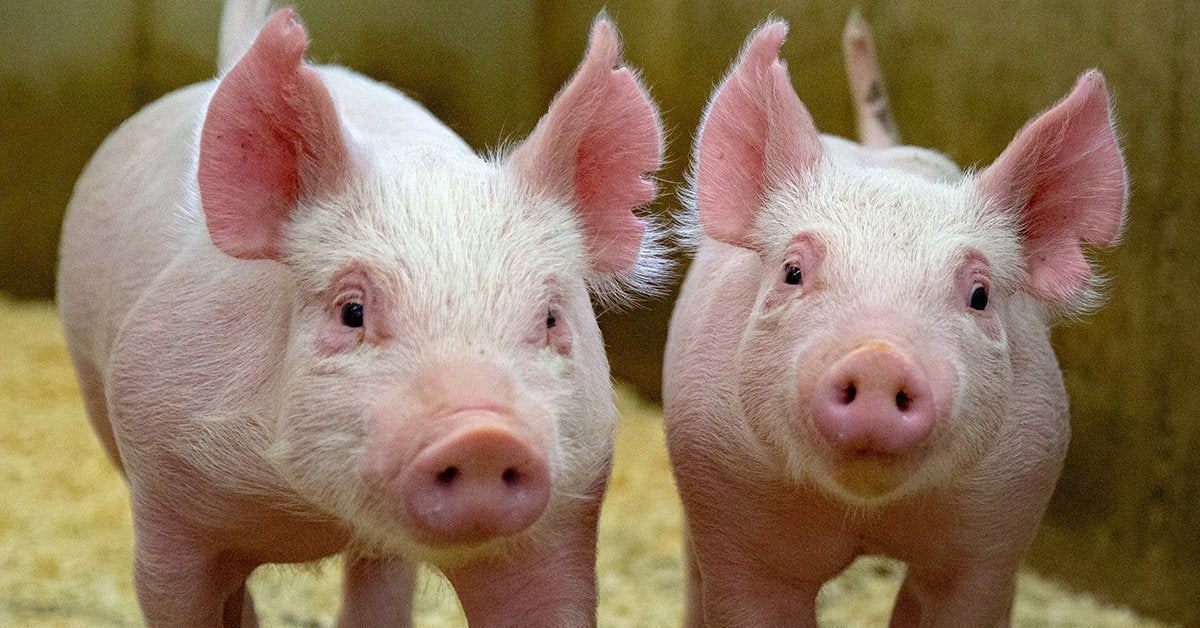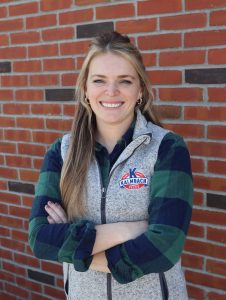Types of Pig Feeds & How to Choose the Right Kind

Pig feeds today can come in a number of different forms. Kalmbach Feeds® makes pig feeds that come in multiple sizes of pellets, as well as meal feeds and even cubes. It may leave you asking yourself which one is best for your pigs.
What Are the Different Types of Pig Feed?
Variables such as your pig’s age, size, and feeder type can play a big role when it comes to deciding which form of feed works best for you. If feeding your pigs on a floor or outside, meal or mash feed is not ideal because it is a challenge for the pig to completely consume it, which results in waste. Pelleted feeds, or possibly even cubes, are easier for the pigs to consume from a floor or outside. Additionally, when pigs are very young and starting on feed, it is important they get all the needed nutrients in the right proportions and not sort through their feed. Therefore, you will find that most nursery pig diets are pelleted to ensure they get all of the nutrients needed. As pigs get older and begin to eat out of a feeder, meal feeds will most likely become a more attractive, cost-effective option.
How to Choose the Right Pig Feed
In industry trials, feeding pelleted feeds to finishing pigs has been shown to improve feed conversion by 5 to 8%. However, high feed costs have led producers to reevaluate the economics of feeding pellets in all phases of commercial production. Factors taken into consideration when contemplating whether to manufacture pelleted feeds include feed processing costs, particle size, pellet quality, as well as the ingredients that can be used.
Feed particle size comes into consideration when discussing the pelleting of pig feeds because of the potential to improve feed efficiency. Pelleted feed ingredients can be reduced to <400µ (<400 microns). In contrast, a typical meal feed particle size recommendation is 600-700µ. Reducing the average particle size of ingredients within a pellet improves digestion and nutrient absorption. However, smaller feed particle size can potentially increase the risk of stomach ulcers. One way to avoid stomach ulcers is to ensure that you’re feeding high quality pellets that hold together.
Pellet quality has a HUGE impact on a pig’s growth performance, as the amount of pellet fines can change the level of growth response, sorting, and feed waste. Processing factors, such as temperature, ingredients, and die thickness have a significant impact on pellet quality.

The types of ingredients used when formulating pig diets also plays a key role in pellet quality and diet costs. Ingredients that would be considered byproducts, like Dried Distiller Grains and Solubles (byproduct of ethanol) and wheat middlings (byproduct of flour milling), are potential cost savers in pig diet formulations. It is, therefore, important to be aware of how these ingredients may affect pellet quality. For example, diets containing more than 7% fat probably won’t make good pellets; and diets containing more than 18% fiber will most likely not push through the pelleting die. However, including a limited amount of higher fiber ingredients, such as wheat middlings, can help bind ingredients and make stronger pellets.
Two pelleting experiments were conducted by M.L. Potter et al., (2010) at Kansas State University. Experiment 1 evaluated the pelleting of corn-soybean meal-based diets, while experiment 2 evaluated the pelleting of diets containing multiple by-products. Pellet durability index (PDI) was recorded at the mill, pictures of feeders were taken, and growth performance was measured. Pelleting produced an improvement in the growth performance of the pigs in both experiments. However, more fines were observed at the feeder with the diets that contained by-products and, therefore, the level of improvement in pig growth performance was lower as compared to pigs fed the pelleted corn-soy diets.
Still Not Sure What to Choose? We’re Here to Help!
Kalmbach Feeds® has conducted its own research within our research facilities to measure effects of pellets vs. meals and pellet size on nursery pig growth performance in order to optimally formulate pig feeds for our customers.
We have a full staff of swine nutritionists that can help answer any questions you may have and help you pick the feed that is best for your operation and pigs.
